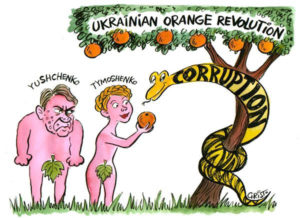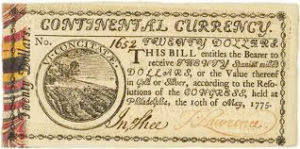 “Treason and murder ever kept together,
“Treason and murder ever kept together,
As two yoke-devils sworn to either’s purpose”
King Henry V, act 2, sc. 2
The Greek writer Plutarch is famous for his “Parallel Lives”, in which he arranged the biographies of famous figures of his time (1st century AD), to outline and compare their moral virtues and their vices.
No modern Plutarch has undertaken the illustration of parallel revolutions. But the absence of the whole does not preclude the presence of a part. Here we will compare two revolutions, distant in time but momentous in outcome. Namely, the Shays’ Rebellion in America and the so-called “colored” Revolution of Ukraine. Actually, more than parallel they should be considered inverted revolutions. Let’s see why.
Daniel Shays was a soldier from Massachusetts who fought in the American War of Independence. He was brave and he was wounded. In recognition of his valor he even received a sword from the hands of the famous, ubiquitous and very French Marques de Lafayette. Shays sold the sword to pay the taxes and debts arising from the economic crisis that followed the war.
 American soldiers were paid in currency called “Continental Dollars”, which quickly lost value. Continental dollars were not even accepted in payment for taxes. The franchised tax collectors would only take metal. In the absence of coins, they took the farmers’ tools and cattle. Or the farmers went actually to prison and prisons were filling fast.
American soldiers were paid in currency called “Continental Dollars”, which quickly lost value. Continental dollars were not even accepted in payment for taxes. The franchised tax collectors would only take metal. In the absence of coins, they took the farmers’ tools and cattle. Or the farmers went actually to prison and prisons were filling fast.
Daniel Shays saw that there were men made rich by the war for independence – people who stayed warm at home while soldiers were freezing at Valley Forge. The view of liberty shared by Shays and friends, differed dramatically from that of the Boston merchants and bankers.
Let’s keep in mind that at this point, (1780-1782), the Colonies had achieved independence from England but each Colony was, in turn, independent. Which, incidentally, was the vision of Thomas Jefferson, the key writer of the Declaration.
Furthermore, after the Revolution, only people with substantial personal property could vote. As a result, the government of Massachusetts was composed almost entirely of merchants, bankers and plutocrats become rich by supplying the army during the revolution.
Given the power structure, it was easy for the government to sock it to the farmers and increase the wealth of the merchants, many of whom were also lenders.
Shays and friends assembled a small army. At the time all farmers had a gun, therefore organizing a military unit of sorts was relatively easy. Their first actions were successful. But the Boston government quickly financed a mercenary force (the Blackwater of the time) and Shays’ army had no chance. There were relatively few executions, Shays fled to Canada and when he returned years later, the government decided it was more prudent to declare an amnesty.
In the end the farmers were both beaten and ridiculed. Remember the Continental Currency not accepted in payment for loans or taxes? After Shays’ Rebellion, the government of Massachusetts decided to accept the Continental Dollars in payment but at a 20% discount. Then when all the Continental Currency had been collected by the lenders and bankers, the government decided to redeem them at their face value – an immediate 20% profit for the 1% of those times.
Still, it was the fear of more rebellions that prompted the “federalists”, as they were called, to frame the famous Constitution at the convention of 1787, installing a federal standing army, capable of strangling immediately any subversion.
As it has been said of the Declaration of Independence, “All men are created equal”, less the Natives, because they were not white, the Blacks because they were not human, the poor because they were not rich and the women because they were not men.”
In summary, the rights of those who actually bore the brunt of the war were crushed, under what today would be called the need for “austerity”.
Advance to 2013-2014 and the following information comes directly from the Financial Times.
Franklin Templeton (FT) is a large Investment Company dealing in trillions worldwide. Sometime in 2013, FT bought 25% of the Ukrainian debt at a generous discount.
The sentence sounds absurd. Who, in his right mind, would buy a debt? What is a debt worth? Why such unbelievable benevolence?
There wasn’t any. In the past Franklin Templeton had bought the Irish debt in bulk and at a discount. FT gambled that the European Union and the IMF would support the Irish banking system, provided the Irish government imposed sundry “austerity” measures, which were indeed imposed.
Franklin Templeton’s purchased debt was redeemed at face value, much as it happened with the Continental Dollars, after they had been discounted by the poor sods who fought the war of Independence.
With the Irish success in mind, Franklin Templeton was looking forward to a duplicate in Ukraine.
However, the plot did not unfold exactly as planned. In September-October 2013 the rating agencies reduced the value of the Ukrainian bonds to junk status. But a partnership with Europe – said the rating agency – could improve the standing, or value, of the Ukrainian bonds. Gambling on the forthcoming “European partnership” Franklin Templeton purchased the discounted bonds.
Until November 2013 the elected president Yanukovich had agreed to massive social spending cuts in exchange for the European “help”. But unexpectedly in November 2013, he freezed the European negotiations. The “oranges” begun to demonstrate, but it was only a taste.
Why the freeze in negotiations?
Beginning December 2013 the Ukrainian government obtains a large loan from China and hints that it could forego the “help” of the IMF and Europe. Now Franklin Templeton sees the serious possibility that its investments will melt into air, into thin air, as Shakespeare would say. Same prospect for other European and American banks who purchased chunks of the “debt”.
Later in December, the US NGOs and the “International Renaissance Foundation” a creature of the plutocrat Soros, spring into action to “promote democracy”.
Still, there aren’t many demonstrations until Dec 17, when Russia loans Ukraine 15 billion $$ and reduces by 40% the cost of gas (imported from Russia). For the “debt” buyers the prospects are bleak.
Protests seem to temporarily fizzle out, but it takes a few days to set in motion the machinery for the inverse revolution, after years of grooming and preparation, as openly admitted by the State Department.
To create the desired world media effect, some dead bodies are needed, and who better able to deliver than the well funded right wing militia (curiously helped by Israel – see the relevant article by the Israeli newspaper Haarez). Victims give substance to revolutions. As if the Ukrainians were absolutely determined to get rid of their government and of an elected president– and with the next elections only 4 months away.
In the instance, the “revolution” was both televised and well organized. Temerity is a more common quality than respect for the public. The project had been well planned. Snacks, comfort goods and T-shirts with the Euromaidan logo were freely available during the upheaval. Posters and photos of a notorious WW II Ukrainian pro-Nazi leader, Stepan Bandera, were prominently displayed.
Add the necessary drama of the necessary victims, thanks to the snipers and sharpshooters of the “rebels” and the coup is complete. Franklin Templeton and the other investors can breathe a sigh of relief. The Administration feels confident to have chosen the right moment to draw Ukraine into NATO, while simultaneously saving the investments of Franklin Templeton. The proverbial two birds with one stone.
 To conclude, in Shays’ rebellion the rebels were the losers. In Ukraine the rebels were apparently the winners. But the regime media ignores an important detail. Throughout Europe, public opinion is bitter towards the so called European Union. The Union has proved an instrument to remove from individual countries the control of their money, affairs and finances – and to blackmail them into the destruction of social services under the flag of “austerity”.
To conclude, in Shays’ rebellion the rebels were the losers. In Ukraine the rebels were apparently the winners. But the regime media ignores an important detail. Throughout Europe, public opinion is bitter towards the so called European Union. The Union has proved an instrument to remove from individual countries the control of their money, affairs and finances – and to blackmail them into the destruction of social services under the flag of “austerity”.
It strains credulity to believe that the Ukrainian people would choose to pay 50% more for their fuel. And to start a revolution (orange or otherwise), to join a European Union that the people of other European countries can’t wait to get away from.
But “the blunt monster with the uncounted heads” is inured to mendacity and can patiently endure it. Meanwhile, the regime media can glibly overlook the signature appellations the State Department gave to the prime minister of Ukraine and to the next president of the “revolutionary” republic – namely Yatz and Klitch, names that adults give to their poodles and children to their puppets.
Which only shows that the Ukrainian “rebels”, unlike Shays’, were really the masters wearing a mask – or rather, puppets in the masters’ payroll. And why the two revolutions, though parallel in name, were inverted in their result.
In the play. King Henry V expostulates against the traitors who attempted to kill him after receiving bribes from the French.
Image Source. https://encrypted-tbn3.gstatic.com/images?q=tbn:ANd9GcQ601LYF0s36OH8nUco8wx_kZ2aTFHnXwVkf3tdR8jbSlD-Oizr
